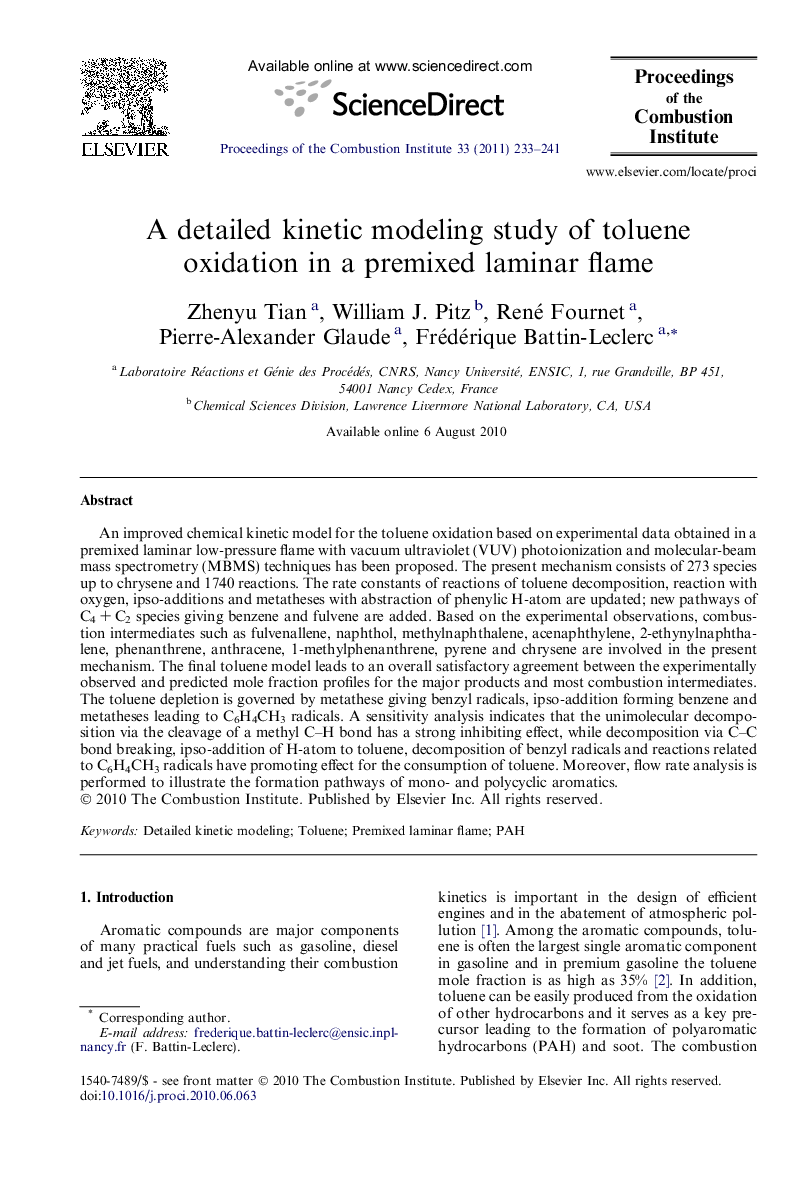| Article ID | Journal | Published Year | Pages | File Type |
|---|---|---|---|---|
| 241324 | Proceedings of the Combustion Institute | 2011 | 9 Pages |
An improved chemical kinetic model for the toluene oxidation based on experimental data obtained in a premixed laminar low-pressure flame with vacuum ultraviolet (VUV) photoionization and molecular-beam mass spectrometry (MBMS) techniques has been proposed. The present mechanism consists of 273 species up to chrysene and 1740 reactions. The rate constants of reactions of toluene decomposition, reaction with oxygen, ipso-additions and metatheses with abstraction of phenylic H-atom are updated; new pathways of C4 + C2 species giving benzene and fulvene are added. Based on the experimental observations, combustion intermediates such as fulvenallene, naphthol, methylnaphthalene, acenaphthylene, 2-ethynylnaphthalene, phenanthrene, anthracene, 1-methylphenanthrene, pyrene and chrysene are involved in the present mechanism. The final toluene model leads to an overall satisfactory agreement between the experimentally observed and predicted mole fraction profiles for the major products and most combustion intermediates. The toluene depletion is governed by metathese giving benzyl radicals, ipso-addition forming benzene and metatheses leading to C6H4CH3 radicals. A sensitivity analysis indicates that the unimolecular decomposition via the cleavage of a methyl C–H bond has a strong inhibiting effect, while decomposition via C–C bond breaking, ipso-addition of H-atom to toluene, decomposition of benzyl radicals and reactions related to C6H4CH3 radicals have promoting effect for the consumption of toluene. Moreover, flow rate analysis is performed to illustrate the formation pathways of mono- and polycyclic aromatics.
